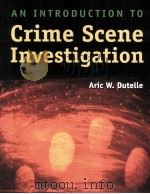《CRIMINOLOGY AND CRIME AN INTRODUCTION》
| 作者 | 编者 |
|---|---|
| 出版 | HAPPER & ROW |
| 参考页数 | 596 |
| 出版时间 | 1986(求助前请核对) 目录预览 |
| ISBN号 | 0060468335 — 求助条款 |
| PDF编号 | 812922478(仅供预览,未存储实际文件) |
| 求助格式 | 扫描PDF(若分多册发行,每次仅能受理1册) |
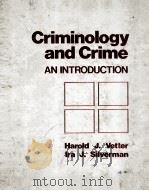
part one: CRIMINOLOGY AND THE STUDY OF CRIME1
1: Crime, Law, and Criminology5
What Is Crime?6
Norms and Socialization8
Social Values and Law9
Deviance11
Law in Historical Perspective13
Substantive Criminal Law and Criminal Procedure18
Classification of Crimes23
Criminology as a Discipline24
Summary27
2: Crime Statistics in the United States30
Sources of Crime Data32
The Extent of Known Crime33
Geographical Area and Crime36
Characteristics of Offenders36
Limitations of the Uniform Crime Reports38
The Role of the Police40
Shortcomings of UCR Procedures43
Alternative Sources of Data on Crime47
Victimization Studies55
Summary58
3: Research and Theory in Criminology62
Scientific Inquiry64
Purposes and Types of Research67
The Nature and Purposes of Criminological Theory73
Summary75
part two: PATTERNS OF CRIMINAL BEHAVIOR79
4: Crimes Against the Person83
A Perspective on Violent Offenders84
Domestic Violence: The Battering Family86
Violent Crime in the United States89
Criminal Homicide89
Assault and Battery97
Robbery98
Sexual Offenses and Offenders99
Voyeurism and Indecent Exposure105
Child Molestation107
Summary108
5: Crimes Against Property114
Occasional Property Offenders115
Ordinary Career Criminals116
Professional Criminals117
Burglary118
Larceny-Theft119
The Fence: Criminal Receiver of Stolen Goods122
Motor Vehicle Theft123
Arson126
Confidence Games128
Criminal Careers130
Summary138
6: Economic, Syndicated, and Political Crime141
Economic Crimes143
Syndicated (Organized) Crime155
Political Crimes166
Summary172
7: Consensual Crimes178
Defining Consensual Crime179
Consensual Crimes and Criminal Justice181
Problem Drinking183
Nonmedical Drug Use186
Prostitution194
Gambling198
Abortion201
Decriminalization of Consensual Crimes202
Summary204
8: Female Offenders208
Explanations of Female Criminality209
Current Analyses of Female Crime216
Female Offenders and the Criminal Justice System222
Community Correctional Programs for Female Offenders229
Summary230
part three: THEORETICAL PERSPECTIVES ON CRIME AND CRIMINALITY235
9: Classical, Positivist, and Neoclassical Perspectives239
The Classical School of Criminology241
The Positivist School of Criminology246
Social Factors and Criminality250
Economic Conditions and Criminality253
Modern Classical Criminology254
Punishment or Rehabilitation?262
Concluding Observations265
Summary266
10: Economic Conditions and Criminality270
Crime as a Product of Capitalism271
Radical Criminology275
Critical Criminology277
Non-Marxist Economic Interpretations281
Economic Models of Criminality289
Summary291
11: Sociological Theories of Criminality295
Social Pathology296
Social Disorganization297
From Social Disorganization to Differential Social Organization303
Culture Conflict305
Subcultural Theories309
Anomie Theory: Emile Durkheim310
Delinquency and Status Frustration: Albert K. Cohen317
Delinquency and Opportunity: Richard A. Cloward and Lloyd E. Ohlin321
Lower-Class Focal Concerns: Walter B. Miller325
Summary328
12: Sociopsychological Theories of Criminality333
Differential Association: Edwin H. Sutherland334
Delinquency and Drift: David Matza and Gresham M. Sykes341
Social Control Theory: Travis Hirschi347
Containment Theory: Walter C. Reckless350
Summary355
13: The Labeling Perspective359
Early Precursors of Labeling360
Emergence of the Labeling Perspective361
Interpersonal Relations364
Organizational Processing368
Collective Rule Making and Enforcement370
Critique371
Conclusions374
Summary376
14: Psychiatric and Psychological Theories of Criminality379
Psychiatry and the Criminality-as-Mental-Illness Approach381
Psychoanalysis and Criminality384
The Search for a "Criminal Personality"387
The Criminal Personality: Yochelson and Samenow389
Learning Theory and Criminality392
Learning Theory and Behavior Modification400
Summary403
15: Biological Theories of Criminality406
Genetics and Criminality411
The Biochemical Approach415
Learning Disabilities and Delinquency416
Epilepsy and Criminality417
Physiological Factors and the Antisocial Personality418
Toward a Biosocial Theory of Criminality423
Summary425
part four: THE ADMINISTRATION OF JUSTICE431
16: The Criminal Justice System435
Components of the Criminal Justice System438
Criminal Procedure452
Crime Control Versus Due Process459
Summary461
17: Law Enforcement463
Police Roles and Responsibilities464
The Structure of American Law Enforcement466
Delivery of Police Services469
Coordination with Other Criminal Justice Subsystems480
Job Stress and Police Personnel482
Police Use of Deadly Force484
Professionalism and the Police486
Summary490
18: The Judicial Process494
Initiation of Prosecution495
Plea Bargaining500
Pretrial Motions501
The Criminal Trial502
Sentencing508
Appeal and Postconviction Remedies511
Summary513
19: Corrections518
Confinement: Detention and Imprisonment519
Imprisonment: An Historical Perspective521
The Contemporary Prison528
Alternatives to Confinement533
Summary545
Glossary569
Index582
1986《CRIMINOLOGY AND CRIME AN INTRODUCTION》由于是年代较久的资料都绝版了,几乎不可能购买到实物。如果大家为了学习确实需要,可向博主求助其电子版PDF文件(由 1986 HAPPER & ROW 出版的版本) 。对合法合规的求助,我会当即受理并将下载地址发送给你。
高度相关资料
-

- PHENOMENOLOGY AND EXISTENTIALISM AN INTRODUCTION
- 1984 ROUTLEDGE&KEGAN PAUL
-

- Cataloging and classification : an introduction
- 1981 McGraw-Hill
-

- FEMALE CRIME THE CONSTRUCTION OF WOMEN IN CRIMINOLOGY
- 1987 NGAIRE NAFFINE
-

- CRIME AND CAPITALISM READINGS IN MARXIST CRIMINOLOGY
- 1993 TEMPLE UNIVERSITY PRESS
-

- CRIME CONTROL STRATEGIES AN INTRODUCTION TO THE STUDY OF CRIME
- 1980 OXFORD UNIVERSITY PRESS
-
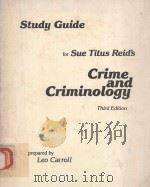
- STUDY GUIDE FOR SUE TITUS REID'S CRIME AND CRIMINOLOGY
- 1982 RINEHART AND WINSTON
-

- KAW OF EVIDENCE
- 1979 LAW BOOK COMPANY
-
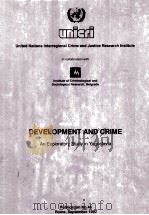
- DEVELOPMENT AND CRIME AN EXPLORATORY STUDY IN YUGOSLAVIA
- 1992 UNITED NATIONS PUBLICATION
-
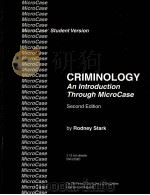
- CRIMINOLOGY AN INTRODUCTION THROUGH MICROCASE SECOND EDITION
- 1992 MICROCASE CORPORATION
-

- BIOFEEDBACK AN INTRODUCTION AND GUIDE
- 1981 MAYFIELD PUBLISHING COMPANY
-

- CRIME & JUSTICE AN INTRODUCTION SECOND EDITION
- 1991 NELSON-HALL PUBLISHERS
提示:百度云已更名为百度网盘(百度盘),天翼云盘、微盘下载地址……暂未提供。➥ PDF文字可复制化或转WORD
